
 Essential oils are not the same as a perfume or fragrance oil. Perfumes are artificially created in a chemical lab, and essential oils are natural, derived from nature.
Essential oils are not the same as a perfume or fragrance oil. Perfumes are artificially created in a chemical lab, and essential oils are natural, derived from nature.
Essential oils are derived from plant roots, leaves, stems, flowers, fruit, seeds, or bark through a process called distillation (by steam or water). This process creates a highly concentrated portion of essential oil taking on the attributes of the plant including the fragrance and healing properties. Essential oils have been used throughout history in many cultures for their medical and therapeutic benefits. There are over 90 essential oils with 1,000’s of different uses!
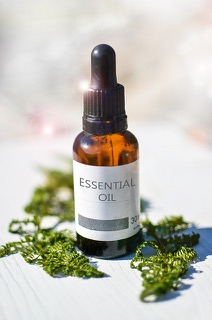 Essential oils are a great addition to any pain management program. They can actually help reduce the need for prescription pain medications. Essential oils have a myriad of benefits for helping with not only physical pain, but mental health, and spiritual healing. Pure, therapeutic-grade essential oils are anti-bacterial, anti-cancerous, anti-fungal, anti-infectious, anti-microbial, anti-tumoral, anti-parasitic, anti-viral, and antiseptic. Essential oils have been shown to destroy all tested bacteria and viruses while simultaneously restoring balance to the body. (Abundant Health, 2017)
Essential oils are a great addition to any pain management program. They can actually help reduce the need for prescription pain medications. Essential oils have a myriad of benefits for helping with not only physical pain, but mental health, and spiritual healing. Pure, therapeutic-grade essential oils are anti-bacterial, anti-cancerous, anti-fungal, anti-infectious, anti-microbial, anti-tumoral, anti-parasitic, anti-viral, and antiseptic. Essential oils have been shown to destroy all tested bacteria and viruses while simultaneously restoring balance to the body. (Abundant Health, 2017)
Essential oils have a bio-electrical frequency that is several times greater than the frequency of herb, food, and even the human body. Clinical research has shown that essential oils can quickly raise the frequency of the human body, restoring it to its normal, healthy level. (Abundant Health, 2017)
Two of the most popular essential oils for pain relief are peppermint and lavender. Lavender is great for reducing muscle tension, easing migraine headaches, neck pain, relieving stress and anxiety, and numerous other things. Peppermint is great for migraines headaches, treating arthritis and intestinal problems, and many other things.
Some of the Physical Health Benefits of Essential Oils Include: reducing muscle tension, inflammation, migraines, neuropathy, back pain, joint pain, fibromyalgia, arthritis relief, sciatica, healing skin conditions, improving digestion, balancing hormones, fighting cold and flu symptoms, and much, much more.
Some of the Mental Health Benefits of Essential Oils Include: reducing stress, relieving depression, improving anxiety, improving insomnia, fatigue, improving concentration, anger, and much, much more.
But luckily, there are enough options to find an essential oil to utilize in place of the one causing an allergic reaction. So always exercise caution when trying out a new essential oil. Only use a drop at a time to make sure you don’t have a reaction or sensitivity.
Here are Some Tips for Using Essential Oils Safely:
- Always pay attention to doses. Some essential oils can be damaging to the skin, liver, or other organs if used improperly.

- Have some knowledge on the quality of the brand you are using. The purity of the essential oil can be altered with chemicals or diluted with vegetable oil. Always review labels for levels of purity.
- An essential oil maybe safe just for aromatherapy, or safe for skin, but not consumption. So consult an expert before consuming any essential oils. Read labels and make sure you understand the intended application for any essential oil you use. Some oils need to be diluted before applying them to your skin.
- There is very little research on whether essential oils can have interactions with pharmaceutical drugs so make sure to consult a healthcare provider for any possible risks.
- When removing an essential oil from your skin (Ex. if you get oil in your eye) you need to dilute it first with a carrier oil and then wash it away with soap and water.
Remember, essential oils are heavily concentrated plant extracts. Just one drop of Young Living’s essential peppermint oil is equal to the strength of 28 cups of tea. So just one or two drops is plenty. (Young Living, 2015)
Peppermint, eucalyptus, and rosemary are not safe for young children. Peppermint is supposedly safe at age six and eucalyptus and rosemary are safe at ten years of age and older. However, you should consult an expert before exposing kids to any essential oils.
How to Use Essential Oils
Aromatics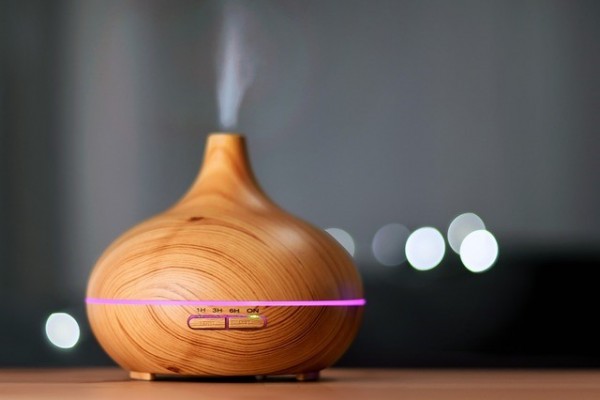 Essential oils can be used in aromatic diffusion. You can purchase an electronic essential oil diffuser to release an essential oil mist into the air. This is a great way to get the mental health benefits of the oils and enjoy the scents. You can also get the benefits of the oils just from sniffing them in their bottles, or adding them to pieces of jewelry specifically designed for essential oils.
Essential oils can be used in aromatic diffusion. You can purchase an electronic essential oil diffuser to release an essential oil mist into the air. This is a great way to get the mental health benefits of the oils and enjoy the scents. You can also get the benefits of the oils just from sniffing them in their bottles, or adding them to pieces of jewelry specifically designed for essential oils.
Applying to Skin and Consuming
Some essential oils can be used on the skin or even added to beverages or food. However, you should read the label and consult an expert, because some need to be diluted with a carrier oil (olive oil, coconut oil, jojoba oil) in order to be applied to the skin, and some are not safe for consumption at all. The best places to apply essential oils to the skin are wrists, temples, feet, and behind your ears.
Beauty Products and Household Cleaners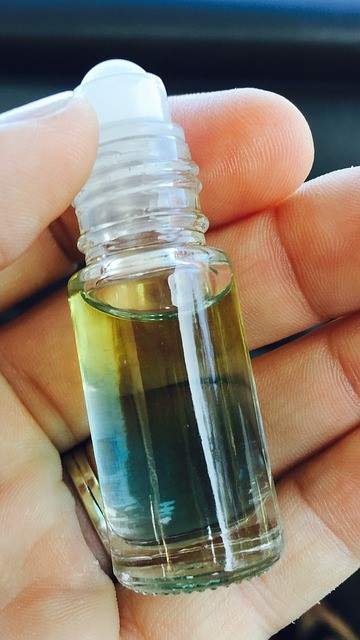 Essential oils can also be used in beauty products as well as household cleaners. The harsh chemicals in cleaners are harmful to your health and add chemicals to the air you breathe. Essential oils purify the air. Essential oils like tea tree and eucalyptus actually work against viruses like the norovirus and influenza.
Essential oils can also be used in beauty products as well as household cleaners. The harsh chemicals in cleaners are harmful to your health and add chemicals to the air you breathe. Essential oils purify the air. Essential oils like tea tree and eucalyptus actually work against viruses like the norovirus and influenza.
Certain essential oils can also help create a clear-looking complexion, soften signs of aging, and improve healthy looking hair. One of the best ways to use essential oils for skin application is to put them in massage oils. They can also be used in lotions, creams, or bath salts. There are products you can actually buy through essential oil companies. There are also hundreds of recipes you can make on your own. A lot of household cleaner recipes only require a few ingredients.
100% Pure Essential Oils vs. Essential Oil Blends
Essential oils can be purchased in their pure form, or as a blend of several different essential oils. You would want a pure essential oil if you are looking for a specific benefit or aroma from a particular plant. The advantage of obtaining an essential oil blend is they have a designated purpose such as “Stress Away,” “Joy,” “Clarity,” “Hope,” “Trauma,” and so on.
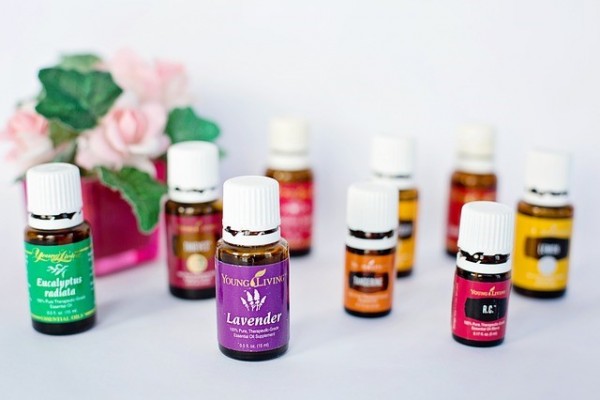 Essential oils vary in quality and price based on the therapeutic value of the oil. The purity and therapeutic value of the oil is determined by the part of the plant the oil is derived from, along with soil condition, geographical region, fertilizer, climate, altitude, and the distillation process. Oils are sold in mostly 5 to 20 ml glass bottles.
Essential oils vary in quality and price based on the therapeutic value of the oil. The purity and therapeutic value of the oil is determined by the part of the plant the oil is derived from, along with soil condition, geographical region, fertilizer, climate, altitude, and the distillation process. Oils are sold in mostly 5 to 20 ml glass bottles.
Some of the most popular essential oil brands include; Young Living Essential Oils, doTerra Essential Oils, Edens Garden Essential Oils, Rocky Mountain Oils, and Plant Therapy Essential Oils.
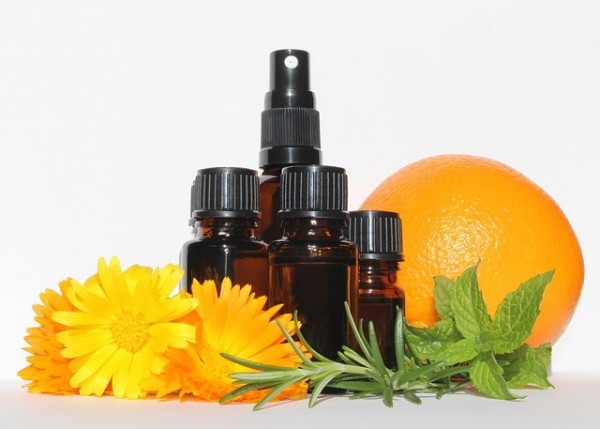 Essential oils have recently gained popularity, but they are not a new concept. Essential oils have been used in wellness practices for over 5,000 years according to Chinese manuscripts and Egyptian hieroglyphics. Essential oils were found in King Tut’s tomb and were attributed to Cleopatra’s legendary beauty, and recommended by Hippocrates who is considered “The Father of Modern Medicine.” Essential oils have been used all over the world in countries including Egypt, Greece, India, Rome, China, and Europe.
Essential oils have recently gained popularity, but they are not a new concept. Essential oils have been used in wellness practices for over 5,000 years according to Chinese manuscripts and Egyptian hieroglyphics. Essential oils were found in King Tut’s tomb and were attributed to Cleopatra’s legendary beauty, and recommended by Hippocrates who is considered “The Father of Modern Medicine.” Essential oils have been used all over the world in countries including Egypt, Greece, India, Rome, China, and Europe.
They are considered to be mankind’s first medicine. They have been used for everything from aromatherapy, therapeutic, religious ceremonies, beauty care, and preservation, to food, for thousands of years. Essential oils are actually the root of today’s pharmaceuticals. There are also over 188 references to essential oils in the Bible. Many of the specific uses and recipes for essential oil blends in today’s world are a result of biblical references. Today, in France, Germany, and England, doctors will often give patients a choice between prescription medicines or natural essential oils when prescribing remedies for a certain health condition.
Emma. (2014-2016). Essential Oil Haven For Natural Health and Well-Being/What are Essential Oils?/How to use essential oils. Retrieved from https://www.essentialoilhaven.com/what-are-essential-oils/
University of Minnesota: Taking Charge of Your Health and Wellbeing/Are Essential Oils Safe?. (2016). Retrieved from https://www.takingcharge.csh.umn.edu/explore-healing-practices/aromatherapy/are-essential-oils-safe
Dr. Axe, Josh (2017). 101 Essential Oil Uses & Benefits. Retrieved from Dr. Axe FOOD IS MEDICINE: https://draxe.com/essential-oil-uses-benefits/
Young Living Essential Oils/Essential Oils in the Ancient World: Part 1. (2015, April 13th).
Retrieved from https://www.youngliving.com/blog/essential-oils-in-the-ancient-world-pt-i/
Abundant Health: Essential Oil Basic Facts. (2017) Retrieved from http://www.abundanthealth4u.com/Essential_Oils_Basic_Facts_s/39.htm
Essential Oils Academy/History of Essential Oils. Retrieved from http://essentialoilsacademy.com/history/
